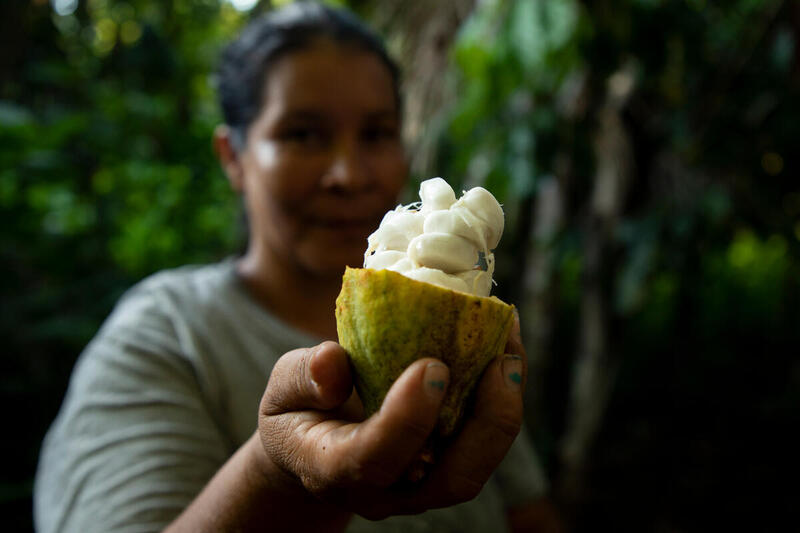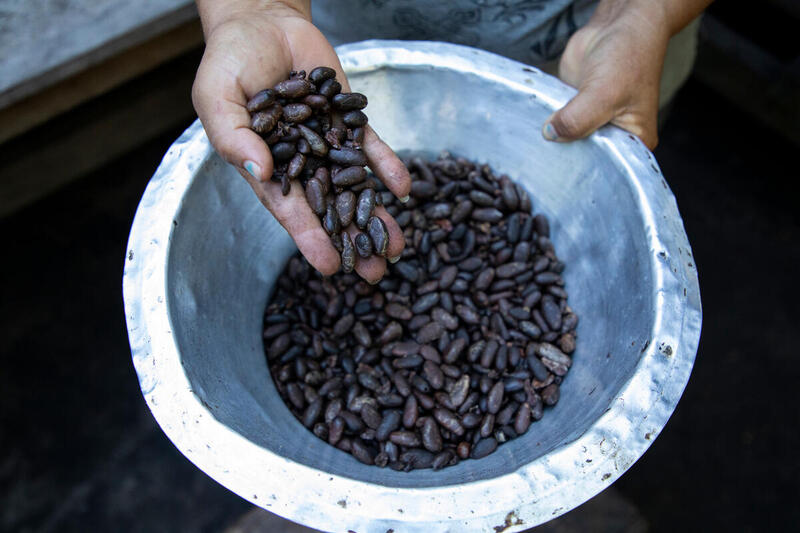There is a need for better dissemination of techniques and practices to increase productivity without losing the focus on sustainability.
In forest-friendly activities, as in any for-profit enterprise, productivity is the secret of success. Productivity is an index that measures the efficiency through which a company converts its inputs into outputs. The higher the productivity, the best its performance in the marketplace.
The productivity of agricultural and agroforestry activities varies widely from company to company, even when the most visible variables are kept constant. For example, in 2021, the Brazilian Statistics Office (IBGE) estimated that cocoa farmers in Bahia produced an average of 325 kilos per hectare. Some producers in that same state, however, obtain 1,500 kilos per hectare. Ivan Costa, a renowned expert, tells me that one producer obtains 3,500 kilos, and Ivan himself believes they can reach 7,500 kilos per hectare.
In the Amazon, cocoa is produced fully exposed to sunlight (“pleno sol”), more adapted to the restoration of degraded lands. As such, it is intrinsically different from the method adopted in Bahia, where cocoa is produced in the shade of the so-called cabruca system, typical of the Atlantic Forest. The variation in productivity across producers, however, remains high. According to IBGE, in 2021 cacao producers in Pará obtained an average of 976 kilos per hectare. On that same state, some farmers obtained between 3,000 and 3,500 kilograms per hectare, and experts believe they can reach 5,000 kilos or more.
Higher productivity requires investment and entails higher operating costs. Yet, a feasibility assessment conducted by Cocoa Action and its coauhtors suggests that this investment pays off.
All these figures indicate that the knowledge needed to increase agricultural and agroforestry productivity already exists, the problem is that it is poorly distributed. The dissemination of this knowledge is usually done through technical assistance and rural extension. ATER, as these services are known in Portuguese, involves classroom activities, awareness campaigns, field demonstrations, practical training, and personalized consulting.
The knowledge needed to increase agricultural and agroforestry productivity already exists, the problem is that it is poorly distributed.
Salo Coslovsky, Associate Professor of Urban Planning and Public Service at New York University
In the Amazon, pilot projects prove that ATER is an excellent investment. A project conducted in Pará by the NGO Solidaridad, for example, reveals that a producer with 50 hectares earns an additional R$4.00 and R$9.00 for every R$1.00 invested in ATER.
Despite this excellent rate of return, the availability of ATER in the Brazilian Amazon remains surprisingly limited. According to the most recent IBGE Agricultural Census, in 2017, only 10% of producers in that region received some technical assistance (compared to 20% on average in Brazil). When we focus on smaller properties, with up to 50 hectares, coverage drops to 7% (against 14% for larger properties).
If ATER is such an advantageous investment, why is it so scarce? The reasons are multiple and complementary.

First, it is expensive to serve a large number of producers, especially when they are scattered throughout the Amazon. Second, the cost of each visit is fixed, but small producers have less room to accrue enough revenue. Third, many farmers prefer to learn for free from neighbors and colleagues, while others hesitate to pay for a service without being certain of a good outcome. Reinforcing this fear, ATER only pays off when farmers have access to complementary resources, so farmers are right to be skeptical.
On the government side, small producers do not usually have enough political power to fight for a sizable budget. Furthermore, it is difficult to measure the effectiveness of ATER, so the leaders of the organization end up measuring inputs (such as farms visited) instead of results (such as increase in productivity). But without good metrics, the organization might fail to provide high quality services. Additionally, many political leaders overload their extension agents with other tasks, including legitimate activities (such as collecting statistics or helping them get credit) and illegitimate ones (such as campaigning for reelection). Since these additional tasks are easier to measure, they end up displacing extension proper.
These obstacles help explain why ATER generates better results when the service is provided by NGOs or when it is required and financed by multilateral agencies, and why it loses its vigor when it returns to the public realm.
Despite these difficulties, there is reason for optimism. Today, virtually every farmer, regardless of farm size, owns a cell phone and can use it to interact with other farmers and extension agents through free WhatsApp groups. Currently, these groups are relatively rare operate on a simple, almost anarchic basis. That said, a visionary farmer that I know dreams of creating a platform inspired by Reddit and Stack Overflow, two websites that organize their discussions and highlight higher quality content. If designed well, this platform could incorporate modern tools such as ChatGPT, image recognition, and voice synthesizers, which allow interactions to be automated at a relatively low cost.
Further, a more innovative ATER for the bioeconomy could draw inspiration from new models of bureaucratic organization, such as those observed in Finland’s school system. These organizations give great leeway to their field agents and thus allow for the provision of individualized services. At the same time, they monitor the performance of these agents through a peer review system. In addition to keeping their field agents on track, this approach to monitoring allows the most innovative professionals to disseminate their learning to colleagues. Thanks to this feedback loop, the organization improves its effectiveness on a continuous basis.
Another possibility is to strengthen the private companies and cooperatives that already provide ATER services in the region. They are usually small, with up to three or four employees, but since they help their clients make more money, they retain enormous potential for growth. Another possibility is to channel funding to research through ATER agents so as to align incentives across these activities.
Together, these innovations can form the basis of a more efficient and effective ATER that is well adapted to the Amazonian conditions and boosts its forest-based, green economy.
The opinions expressed in this article are the writer’s own.



